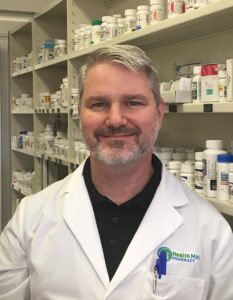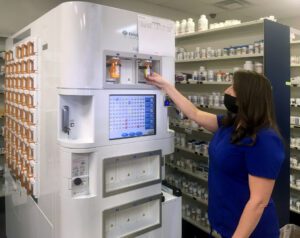When pharmacy owners list their “Gotta Haves” in choosing an automated robotic dispenser, their lists run the gamut. Any or all could be on the project wish list:

Usually, one item on the list is so important that it is non-negotiable. For Ron Strickland, that #1 need was accuracy. Hands-down. Deal-breaker. “With a pharmacy robot, the main function should be to count everything perfectly, right? It’s the whole point of automating,” says the owner of Lincoln Pharmacy in Lincoln, AL. He was adamant about accuracy because for 17 years, his old robot could not be trusted. “We were double-counting every script filled by the old one. We didn’t dare put C-II medications through it,” says Strickland.

In early 2020, Strickland began researching for a replacement. He found the newest Kirby Lester model, the KL108 Secure Robot, and he crunched the numbers; it would cost less to buy a KL108 instead of continuing his long-term lease with the old pharmacy automation. Affordability was good, but his ultimate decision hinged on perfect prescription counts. Since installation, Strickland’s KL108 has delivered as promised.
The pharmacy’s 108 fastest moving tablets and capsules are quickly handled by his Kirby Lester automation, even controlled medications and expensive pills. “It’s a relief for us to be able to load any drug and trust that scripts will come out accurate. We don’t have time to waste time or steps,” says Strickland, who with wife Amy (both pharmacists), have seen Lincoln’s business expand steadily over their 20 years of ownership.
The KL108 includes several security features to prevent diversion and replenishment errors. It is compliant with the highest industry standards for cyber security (Capsa Healthcare is ISO 27001:2013 certified, meeting the highest standards for cyber-security and HIPAA compliance). The system also includes newly engineered universal cassettes that do not require the Lincoln Pharmacy staff to ever recalibrate, unless they switch to a different NDC. To have cassettes quickly auto-calibrate and then stay calibrated was another plus, since there’s no room for inefficiency in this busy community pharmacy 45 minutes east of Birmingham.

The KL108 automates fewer NDCs than the old robot, and Strickland admits that was a consideration. “We ran a usage report. After we got past cassette #100 on the old pharmacy robot, we were only dispensing 8-10 prescriptions per month total from cassettes 101 to 200. If you are only dispensing something every other day or every third day, why automate it?”
The KL108 consistently handles about 70% of all tablets/capsules Lincoln Pharmacy dispenses and requires less square footage – two outcomes that pleased Strickland. The robotic Rx filler is only 67” deep x 30” wide, easily fitting into the space of a row of shelving.
Switching to new pharmacy automation for retail or outpatient pharmacies can be daunting, especially when the old prescription counting system had been in place for almost two decades. However, Strickland noted the Lincoln team found the KL108 to be more user-friendly. Full comfort level was reached in 1-2 weeks for all technicians. “If I had to give advice to other pharmacy owners investigating a pharmacy robot, I’d say explore what’s out there. You may be in a similar situation, where you could get newer, better technology, and actually pay less.”